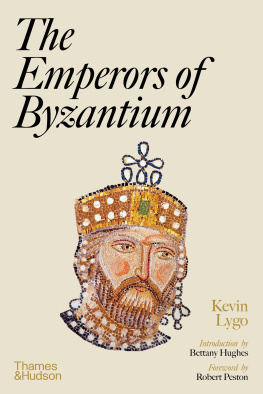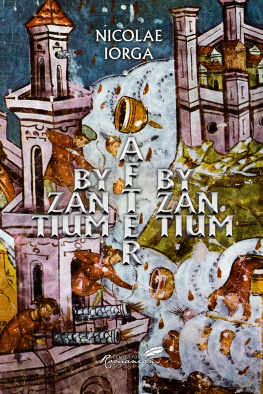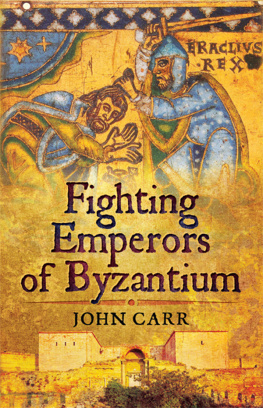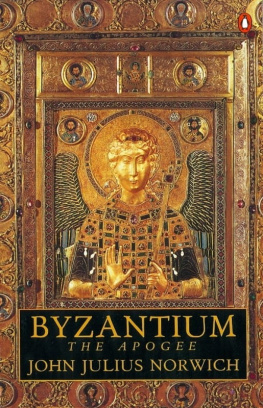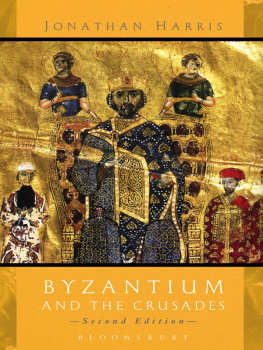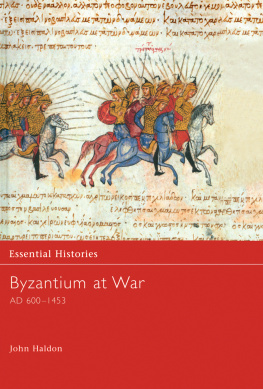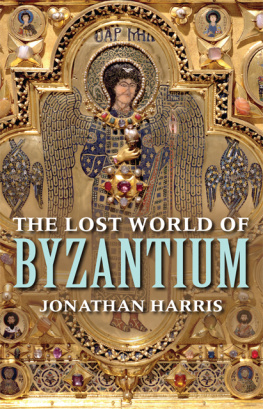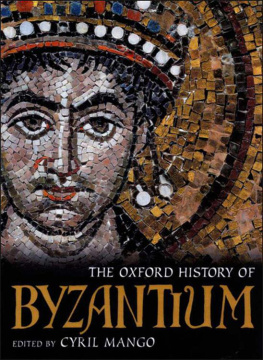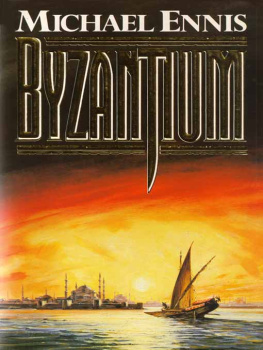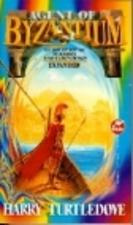Kevin Lygo - The Emperors of Byzantium
Here you can read online Kevin Lygo - The Emperors of Byzantium full text of the book (entire story) in english for free. Download pdf and epub, get meaning, cover and reviews about this ebook. year: 2022, publisher: Thames & Hudson Ltd., genre: Detective and thriller. Description of the work, (preface) as well as reviews are available. Best literature library LitArk.com created for fans of good reading and offers a wide selection of genres:
Romance novel
Science fiction
Adventure
Detective
Science
History
Home and family
Prose
Art
Politics
Computer
Non-fiction
Religion
Business
Children
Humor
Choose a favorite category and find really read worthwhile books. Enjoy immersion in the world of imagination, feel the emotions of the characters or learn something new for yourself, make an fascinating discovery.
- Book:The Emperors of Byzantium
- Author:
- Publisher:Thames & Hudson Ltd.
- Genre:
- Year:2022
- Rating:3 / 5
- Favourites:Add to favourites
- Your mark:
- 60
- 1
- 2
- 3
- 4
- 5
The Emperors of Byzantium: summary, description and annotation
We offer to read an annotation, description, summary or preface (depends on what the author of the book "The Emperors of Byzantium" wrote himself). If you haven't found the necessary information about the book — write in the comments, we will try to find it.
The Emperors of Byzantium — read online for free the complete book (whole text) full work
Below is the text of the book, divided by pages. System saving the place of the last page read, allows you to conveniently read the book "The Emperors of Byzantium" online for free, without having to search again every time where you left off. Put a bookmark, and you can go to the page where you finished reading at any time.
Font size:
Interval:
Bookmark:



The interior of Hagia Sophia, literally the Church of Holy Wisdom, built by Justinian I in Constantinople after the Nika riots of 532.
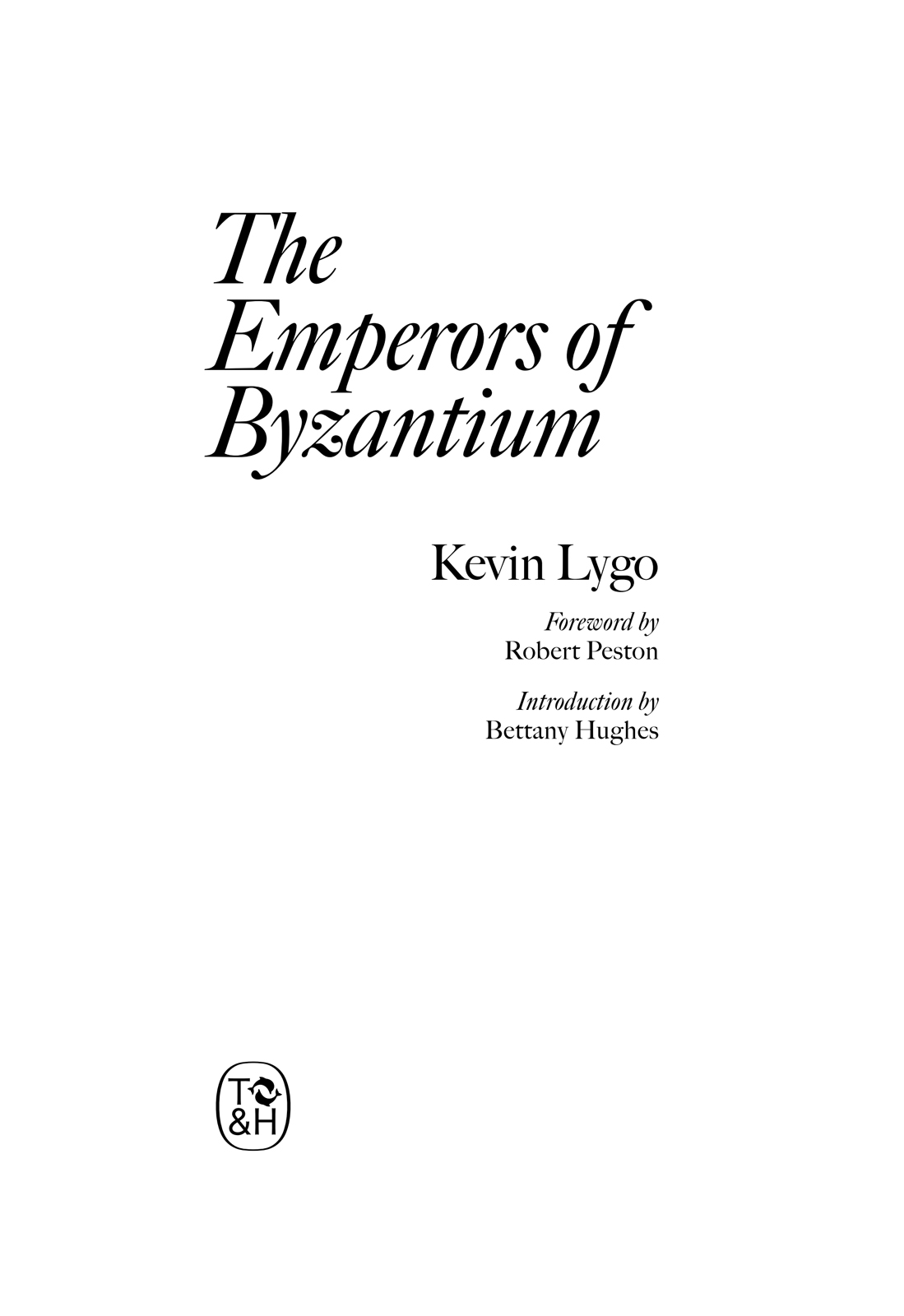
Kevin Lygo is an expert in Islamic and Byzantine art who has travelled across Europe and the Middle East extensively. He has previously edited the publications Portraits of the Masters: Bronze Sculptures of the Tibetan Buddhist Lineages (2003) and Pages of the Quran. A study of Islamic Calligraphy (2011). He is Director of Television at ITV and was formerly Director of Television at Channel 4. Bettany Hughes is an award-winning historian, author and broadcaster. Robert Peston is a journalist, writer and the Political Editor of ITV News.
Other titles of interest published by
Thames & Hudson include:
Medieval People: From Charlemagne to Piero della Francesca
Michael Prestwich
A History of Ancient Greece in 50 Lives
David Stuttard
Islamic Civilization in Thirty Lives: The First 1,000 Years
Chase F. Robinson
Be the first to know about our new releases,
exclusive content and author events by visiting
www.thamesandhudson.com
www.thamesandhudsonusa.com
www.thamesandhudson.com.au
Constantine I The Great Constantius II Julian the Apostate
Jovian
Valentinian I Valens Gratian
Theodosios I Arcadius Theodosios II Pulcheria & Marcian
Leo I Leo II Zeno Basiliskos Anastasios I Dikoros
Justin I Justinian I Justin II Tiberios II Constantine Maurice Tiberios
Phokas
Herakleios Constantine III & Heraklonas Constans II Constantine IV Justinian II Rhinotmetos (First Reign)
Leontios Tiberios III Apsimar Justinian II Rhinotmetos (Second Reign) Philippikos Bardanes Anastasios II Artemios Theodosios III
Leo III the Isaurian Artabasdos Constantine V Kopronymos Leo IV the Khazar Constantine VI the Blind Irene
Nikephoros I Staurakios Michael I Rangabe
Leo V the Armenian
Michael II Theophilos Michael III
Basil I Leo VI Alexander Constantine VII Porphyrogennetos Romanos I Lekapenos Romanos II Nikephoros II Phokas John I Tzimiskes Basil II Bulgaroktonos Constantine VIII Romanos III Argyros Michael IV the Paphlagonian Michael V Kalaphates Zoe Porphyrogennete & Theodora Porphyrogennete Constantine IX Monomachos Theodora Porphyrogennete
Michael VI Stratiotikos
Isaac I Komnenos
Constantine X Doukas Romanos IV Diogenes Michael VII Doukas Nikephoros III Botaneiates
Alexios I Komnenos John II Komnenos Manuel I Komnenos Alexios II Komnenos Andronikos I Komnenos
Isaac II Angelos Alexios III Angelos Alexios IV Angelos & Isaac II Angelos Alexios V Doukas Mourtzouphlos
The Latin Occupation of Constantinople The Despotate of Epiros The Empire of Trebizond
Theodore I Laskaris John III Doukas Vatatzes Theodore II Laskaris John IV Laskaris
Michael VIII Palaiologos Andronikos II Andronikos III John V John VI Kantakouzenos Andronikos IV John VII Manuel II John VIII Constantine XI Dragases
I studied history in a state school in the 1970s, when the subject had not degraded into current affairs. But even before the teaching of history became just another battleground for culture wars between Right and Left, neocons and born-again socialists, teenagers were expected neither to notice nor care that the curriculum went from the Romans straight to the Ottomans, with about a thousand years more or less ignored. If youd asked me what had happened during this intervening period, I would have muttered something about the Dark Ages, transposing to Eurasia the cultural degradation of Western Europe.
I assume that the enduring Eastern part of Romes hegemony was ignored in North London and beyond because the flamboyant Christianity it fostered was an affront to the dull and sober established Church of England. I was well into my twenties before I had a grasp of the origins and importance of the Orthodox church, which came about mainly because I was lucky enough to have Greek Cypriot friends, whose gifts to me were the music of Cat Stevens and a couple of invitations to boisterous, enormous nuptials. Later, in 1989, when I visited Kiev to report on the collapse of the Soviet Union, I concluded that Communism might be crumbling, but Orthodoxy was probably set fair for another millennium. The ebullient primate I met there was explicit that dictators might come and go, but he and his fellow clerics would not be budged.
My idea of Byzantium was derived almost wholly from English Literature set texts, in particular W. B. Yeatss poem of that name and his Sailing to Byzantium. Both summon up a dreamlike, mythical place of emperors, gold-leafed handiwork, soldiery and ghosts. It turns out, according to Kevin Lygo, that Yeats wasnt so far from the truth. As Yeats wrote, Byzantium was the centre of European civilisation and the source of its spiritual philosophy.
High civilization is not the same as compassion or squeamishness. Kevin Lygos epic narrative of imperial succession tells of every kind of familial betrayal, exile and homicide, including some that make Game of Thrones seem restrained (which is presumably because, as George R. R. Martin has said, his influences were largely French and English medieval history). This is why Byzantine is in the lexicon as a synonym for complex and impenetrable, used especially as an epithet for plotting and scheming.

The Virgin and Child with Justinian and Constantine in the vestibule of Hagia Sophia, c. 900. Constantine donates the city to the Virgin, while Justinian donates Hagia Sophia itself.
But along with the blood, gore and deviousness, there was great art, architecture, philosophy and jurisprudence. Justinians magnificent 6th-century Orthodox cathedral, Hagia Sophia the glory of Byzantine architecture has defined the great city on the Bosphorus for 1,500 years. The widely criticized decision of Turkeys president, Recep Tayyip Erdoan, to turn Sophia into a working mosque is proof of its enduring symbolic power. Another living monument to Byzantine culture is the Cyrillic script, which honours in its name a Byzantine saint, Cyril, who together with St Methodius helped spread the alphabet throughout the Slavic territories, as a medium for propagating the Orthodox faith and reinforcing the power of Constantinople rather than Rome.
The other paradox of my school education as, I assume, for most of my generation is that we were taught that the Fall of Constantinople in 1453 to the Muslim Ottomans was a defining moment, marking in the clich the end of the medieval age. But we were never told about the way that the Byzantine Empire stopped the great Muslim expansion of the 7th and 8th centuries, by repelling first the Umayyads and then the Abbasids. Whether you think of Europe as a Christian or a secular and liberal concept, it would not exist today had Byzantium not been its iron girdle for a thousand years. Irrespective of the volatile nature of international politics, we are defined by European history and European values. And for all that we need to thank the Byzantine emperors.
Next pageFont size:
Interval:
Bookmark:
Similar books «The Emperors of Byzantium»
Look at similar books to The Emperors of Byzantium. We have selected literature similar in name and meaning in the hope of providing readers with more options to find new, interesting, not yet read works.
Discussion, reviews of the book The Emperors of Byzantium and just readers' own opinions. Leave your comments, write what you think about the work, its meaning or the main characters. Specify what exactly you liked and what you didn't like, and why you think so.

